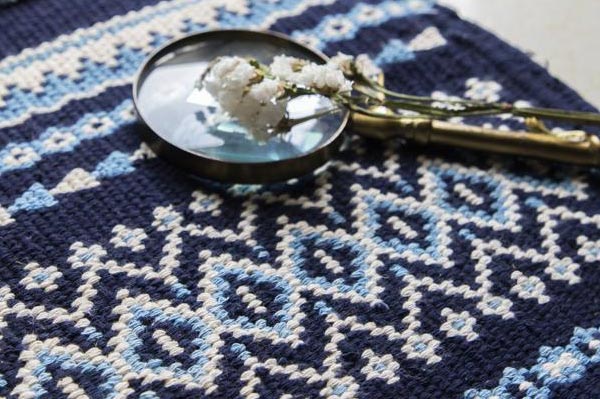The natural resources required for Kharad Craft are wool and vegetable colors. Kachchh had a robust tradition of animal husbandry. The pastoral communities maintained large herds of camels and livestock like goats, sheep etc. Originally Kharad carpets were made from goat and camel hair wool. The Maldharis and Rabaris ( pastoral communities ) shear the hair from camels and goats. This was then given to the hand-spinners who specialized in making wool out of goat and camel hair. This wool was then used by the Kharad artisans. The Kharad artisans produced Kharad (used for spreading on the floor), Khurjani (used to keep on the back of a camel to carry heavy items), Rasa (thick cloth used to cover grains). They used to roam the villages of Banni, Pancham and Sindh for selling their products. The village/town called Mugdan at the Indo-Pak border had regular customers of Kharad and Khurjani. Products such as Khurjani were popular in Sindh where these items sold easily as many people owned camels there. The Kharad adorned many palaces in Sindh and Gujarat. The Kings and the ministers were regular patrons of Kharad given their very distinctive look, strength and longevity of Kharad. A kharad can easily last up to 100 years. Presently the Kharad craft is a diminishing craft.



